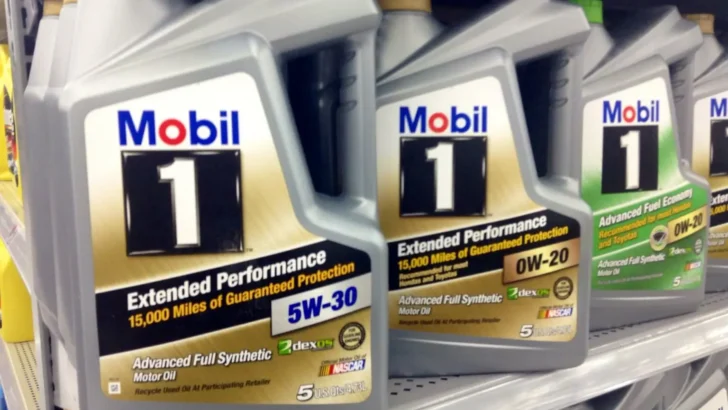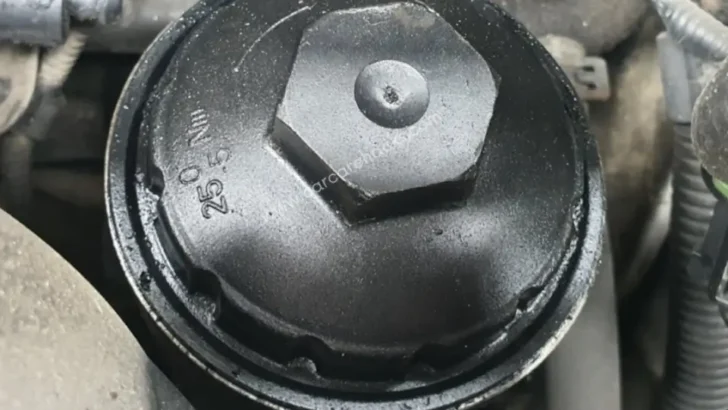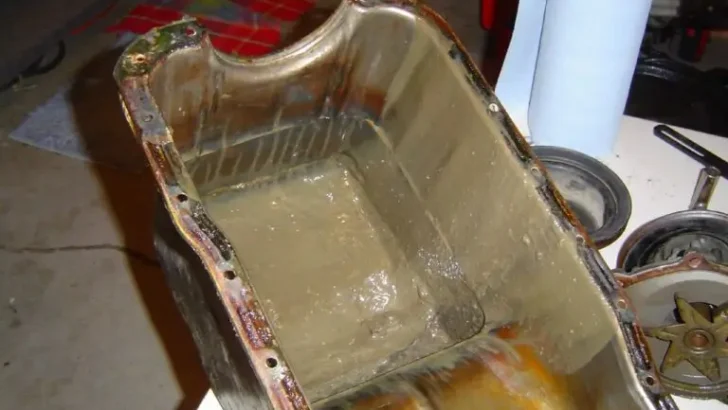Most drivers never consider their oil pressure until there’s an issue. Low oil pressure at idle can cause all sorts of problems, from decreased performance to engine failure. That’s why it’s critical to understand how to increase the oil pressure when idle.
In this article, we’ll show you how to increase oil pressure at idle. By following these simple instructions, you can help keep your engine running optimally!
Key Takeaway
- To increase the oil pressure at idle, you will need to change the engine oil, use the correct viscosity, change the oil filter, clean the oil pan, troubleshoot the oil pump, clean the oil pick-up tube, check the main and connecting rod bearings, and check for a faulty oil pressure sender/switch.
- Low oil pressure at idle can be caused by factors such as worn engine bearings, a failing oil pump, incorrect oil viscosity, a clogged oil filter, or low oil level in the engine.
What Causes Low Oil Pressure At Idle
Low oil pressure at idle can be caused by factors such as insufficient oil in the engine, incorrect oil viscosity, malfunctioning oil pressure gauge, engine wear, pump wear, and high oil temperature.
Insufficient Oil in the Engine
When the oil level in the engine is low, it can lead to low oil pressure. The oil in an engine serves to lubricate internal components, reducing friction and heat. If there is not enough oil present, the necessary lubrication is reduced, leading to increased friction, heat, and ultimately, low oil pressure.
Incorrect Oil Viscosity
The viscosity of the oil used in an engine plays a critical role in maintaining proper oil pressure. If the viscosity is too high or too low, it can negatively impact the oil pressure. High-viscosity oil can lead to increased resistance in the oil flow, while low-viscosity oil may not provide adequate lubrication, both scenarios resulting in low oil pressure.
Malfunctioning Oil Pressure Gauge
Sometimes, the issue may not be with the oil pressure itself, but with the gauge that measures it. If the oil pressure gauge is defective, it could give inaccurate readings, making it seem like the oil pressure is low when it is not.
Engine Wear
Over time, parts of the engine can wear down, affecting its overall performance, including oil pressure. Worn-out bearings, for example, can lead to increased clearances, allowing oil to escape more readily, which can result in low oil pressure.
Pump Wear
The oil pump plays a key role in maintaining oil pressure by pumping oil throughout the engine. If the oil pump is worn or damaged, it may not be able to pump oil effectively, leading to low oil pressure.
High Oil Temperature
High oil temperature can also cause low oil pressure. When oil gets too hot, it can thin out, reducing its ability to lubricate and leading to lower oil pressure. It’s crucial to ensure the engine is not overheating to maintain appropriate oil pressure.
How To Increase Oil Pressure At Idle?


Low oil pressure at idle can lead to a variety of issues, such as engine damage, increased fuel consumption, and emissions. To combat this problem, there are a few things you can do:
1. Change the engine oil

Over time, the oil in your car will start to break down and accumulate dirt and debris. This can lead to various issues like low oil pressure, increased engine wear, and decreased performance.
One of the most essential maintenance tasks you can do for your vehicle is regularly changing the oil; this helps keep the oil clean and prevents it from breaking down too rapidly.
Regularly changing the oil in your car helps to ensure normal oil pressure, which can prevent engine damage if left low. By keeping your car running smoothly and preventing costly repairs in the future, you’ll help keep it running optimally.
2. Use the correct viscosity

Even if you change your oil according to the manufacturer’s recommended schedule, the oil pressure in your engine can still decrease over time. This could be because you are using engine oil with an incorrect viscosity.
If the engine oil is too thin, it will increase the risk of metal contact between the main/rod bearings and the engine’s crankshaft.
Oil pressure is essential for keeping your car running optimally. Oil helps lubricate the engine, keeping its parts cool. If the oil level drops too low, it won’t be able to properly lubricate, leading to decreased power and reduced fuel efficiency – in extreme cases, even the engine seizes up!
Conversely, thick oil will not flow easily through an engine and this could result in diminished power and decreased fuel efficiency.
Furthermore, thicker oils tend to accumulate on engine parts, leading to clogs or other issues. As such, it’s essential that you use only the recommended viscosity of oil for your car’s needs.
3. Change the oil filter

Engine oil is essential for the smooth running of your car. Not only does it lubricate moving parts, but it also keeps the engine cool. With time, however, oil can become dirty and thickened due to low pressure in its reservoir – leading to reduced fuel efficiency and greater wear on engine components.
Once engine oil leaves the pan, it passes through an oil filter before reaching bearings and galleys. All filters, clean or dirty, create some resistance to flow but a dirty oil filter creates significantly greater obstruction which lowers oil pressure. In extreme cases, there could be situations where no oil passes through at all.
Engine oil that becomes dirty will clog the oil filter, leading to low oil pressure and further engine damage. That’s why it’s essential to change your oil filter periodically; a dirty filter can lead to various issues so be cautious and replace it each time you change the oil.
4. Clean the oil pan

At the bottom of a car’s engine, an oil pan stores motor oil that lubricates and cools it. Over time, however, this pan can become dirty and filled with sludge, leading to decreased oil pressure – and ultimately engine damage if not addressed promptly.
Preventing engine damage by checking oil levels regularly and changing them when needed helps ensure your engine stays healthy and runs smoothly.
By keeping the oil clean and at the correct level, you can help keep dirt out of the pan in the first place and ensure its performance. Furthermore, make sure the oil filter is cleaned to allow it to do its job effectively.
By maintaining a healthy oil environment for your engine, it will keep it running optimally for years to come.
Uncleaned oil pans can become clogged with thick deposits of dirt and oil over time. If not addressed, these buildups may eventually lead to engine issues. Fortunately, there are a few easy steps you can take to keep your oil pan in good condition.
First, use a putty knife or similar tool to scrape away any large chunks of oil and grime. Next, mix together hot water with dish soap, then use a scrub brush to eliminate any remaining residue.
Lastly, rinse the pan thoroughly with hot water to thoroughly remove soap residue. By following these simple steps, you can help ensure your engine runs smoothly for years to come.
5. Troubleshoot the oil pump

One possible cause of low oil pressure could be an inadequate oil pump. The pump circulates oil throughout the engine, and if it malfunctions, the oil pressure will drop. As a general guideline, gear-type oil pumps should have less than 0.003 inches of end play between their gears and cover.
On rotor-style oil pumps, clearance between teeth and pump housing is typically less than 0.005 inches; on outer rotor-style pumps, clearance between the outer rotor and housing must not exceed 0.012 inches, with any more than 0.010 between inner and outer lobes.
Due to excessive clearance between oil pump components, reduced flow, and pressure are common symptoms.
Troubleshooting an oil pump might involve taking apart the oil pan to gain access. A certified mechanic then disassembles and inspects the pump, measuring clearances between chambers as they expand and compress during the rotation of pumping gears.
Finally, they’ll compare these values against specifications to identify any issues.
6. Clean the oil pick-up tube

Low oil pressure is a common issue in cars, and it can be caused by several different things. One potential culprit may be an obstruction in the oil pick-up tube.
This tube scoops up oil from below the pan and delivers it to the engine; if clogged with dirt or debris, it restricts oil flow and results in low-pressure levels.
Sludge can easily clog the oil pick-up screen and restrict oil flow to the engine, thus causing low oil pressure.
Sludge builds up when engine oil becomes old and begins to break down due to heat, friction, and the accumulation of deposits from combustion gases that make their way past the piston rings.
To clean the oil pick-up tube, you need to remove the oil pan. This might be a job for a certified mechanic.
7. Check the main and connecting rod bearings

Engines running at high speeds can cause faster-than-usual wear on crankshaft bearings, especially if combined with low-grade oil and extended intervals between oil changes.
As these bearings begin to deteriorate, there’s an increase in clearances – even a .001-inch drop can result in up to 20% drop in oil pressure – an important number that affects engine lubrication.
Worn engine bearings can lead to low oil pressure. These bearings support the moving components of an engine, and if they become worn out, they won’t do their job correctly. This causes the engine to run less smoothly and the oil pressure will decrease accordingly.
No matter the cause of wear or increased clearances in bearings, the end result is always reduced oil pressure. To check the main and connecting rod bearings properly, visit your local mechanic’s shop; this task can be complex and many things could go awry if done incorrectly.
If your vehicle is experiencing low oil pressure due to worn main and connecting rod bearings, replace them right away!
Actions such as installing a stronger oil pump to increase pressure can only go so far; you must address the root cause of your problems rather than simply treating their symptoms.
8. Check for a faulty oil pressure sender/switch

A malfunctioning oil pressure switch can result in low oil pressure in a vehicle. This switch controls when and how often the oil pump turns on and off, providing necessary pressure for lubricating engine components – leading to engine damage, decreased fuel economy, or even stalling.
If you think your oil pressure switch may be malfunctioning, have it tested by an experienced mechanic for confirmation.
To diagnose a malfunctioning oil pressure sender/switch on your vehicle, use an OBD scanner. Connect it to the computer and scan away! A P0520 diagnostic trouble code indicates an engine oil pressure sensor/switch circuit issue; if so, replace this unit immediately.
FAQs
How can I increase oil pressure at idle?
To increase oil pressure at idle, you can change the engine oil to the correct viscosity, replace the oil filter, and ensure the engine isn’t overheated. Using a thicker oil or an oil additive designed to boost pressure may also help.
Does changing the oil filter increase oil pressure?
Yes, changing the oil filter can help increase oil pressure. A clogged oil filter can restrict the flow of oil, leading to lower oil pressure. Some customers have reported an increase in oil pressure after upgrading to higher-quality oil filters.
Can engine sludge cause low oil pressure?
Yes, engine sludge can cause low oil pressure. When oil breaks down and gathers on the engine, engine sludge can form, hindering the free flow of oil and subsequently leading to low oil pressure.
Does the type of engine oil affect oil pressure?
Yes, the type of engine oil can affect oil pressure. Using the wrong viscosity oil for your engine can lead to low oil pressure. Thicker oils can potentially increase oil pressure.
Is low oil pressure at idle dangerous?
Yes, low oil pressure at idle can be dangerous as it means that insufficient oil is reaching the engine parts, which can lead to increased friction, overheating, and potentially severe engine damage.
Can a bad oil pump cause low oil pressure?
Yes, a bad oil pump can cause low oil pressure. If the pump is not turning fast enough to create a high enough flow, it may not be able to build sufficient oil pressure.
Conclusion and final thoughts
In conclusion, increasing oil pressure at idle is an important aspect of maintaining your vehicle’s engine health.
By following the steps outlined in this blog post, you can easily increase oil pressure and ensure that your engine runs smoothly at all times.
Remember to regularly check your oil levels and change them as needed, and also keep an eye on any warning signs of low oil pressure.
